



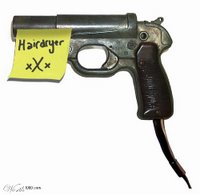
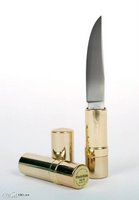



Amazing pieces of life that show you the great world we live in.
DRUG REHAB
 Anne Geddes is one of the most respected and successful professional photographers in the world. Her award-winning photographs of babies are visual representations of her deeply held belief that we must protect, nurture, and love all children. First released in New Zealand and Australia, they have become classic icons celebrating birth and life that now grace a range of bestselling books, calendars, greeting cards, stationery, photo albums, and many other fine products. The Anne Geddes brand is universally respected and loved; her work is published in 77 countries spanning North America, Europe, the United Kingdom, Australia, New Zealand, South America, the Middle East, Africa, and Asia. A two-time New York Times bestselling author, Anne's books have sold more than 15 million copies worldwide and have been translated into 20 languages: Arabic, Brazilian Portuguese, Chinese, Czech, Dutch, English, Finnish, French, German, Greek, Hungarian, Icelandic, Italian, Japanese, Lithuanian, Norwegian, Polish, Portuguese, Slovak, and Spanish. Her website, annegeddes.com, attracts more than 3.5 million unique visitors per year from more than 200 countries.
Anne Geddes is one of the most respected and successful professional photographers in the world. Her award-winning photographs of babies are visual representations of her deeply held belief that we must protect, nurture, and love all children. First released in New Zealand and Australia, they have become classic icons celebrating birth and life that now grace a range of bestselling books, calendars, greeting cards, stationery, photo albums, and many other fine products. The Anne Geddes brand is universally respected and loved; her work is published in 77 countries spanning North America, Europe, the United Kingdom, Australia, New Zealand, South America, the Middle East, Africa, and Asia. A two-time New York Times bestselling author, Anne's books have sold more than 15 million copies worldwide and have been translated into 20 languages: Arabic, Brazilian Portuguese, Chinese, Czech, Dutch, English, Finnish, French, German, Greek, Hungarian, Icelandic, Italian, Japanese, Lithuanian, Norwegian, Polish, Portuguese, Slovak, and Spanish. Her website, annegeddes.com, attracts more than 3.5 million unique visitors per year from more than 200 countries.

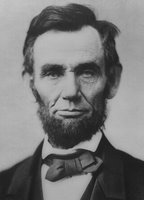 named Kennedy.
named Kennedy.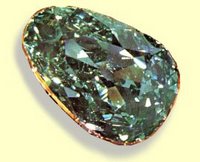 1. The Dresden diamond weighs 41 carats. It probably came from India, but its early history is obscure. Schumann (1995) stated it was “supposedly bought in 1742 by Friedrich August II, Duke of Saxony, for 400,000 taler. Kept in the Green Hall in Dresden.” This diamond is cut in a pear shape and has a beautiful emerald-green color. One of the Rarest Diamonds in the World--A Comparatively Small Gem Valued now at 50,000 $.
1. The Dresden diamond weighs 41 carats. It probably came from India, but its early history is obscure. Schumann (1995) stated it was “supposedly bought in 1742 by Friedrich August II, Duke of Saxony, for 400,000 taler. Kept in the Green Hall in Dresden.” This diamond is cut in a pear shape and has a beautiful emerald-green color. One of the Rarest Diamonds in the World--A Comparatively Small Gem Valued now at 50,000 $.
2. The Hope Diamond is a 45.52 carat diamond, and is now in the Smithsonian
Institution in Washington, D.C. It first appeared in the diamond trade in 1830.
It was first bought by a banker whose name was H. Ph. Hope, and it is believed
the diamond was cut from a larger gemstone. The Hope diamond has an emerald cut
and is a deep blue color. The Hope diamond became the property of the
Smithsonian in 1958.
Facts : Dark blue in color.Size: 21.78 mm wide, 25.60 mm long, 12.00 mm deep
After exposure to ultraviolet light it phosphoresces red (most other blue
diamonds phospheresce light blue). Surrounded by 16 white diamonds plus an
additional 45 white diamonds which make up the necklace chain
According to the legend, a curse befell the large, blue diamond when it was
plucked (i.e. stolen) from an idol in India - a curse that foretold bad luck and
death not only for the owner of the diamond but for all who touched it.
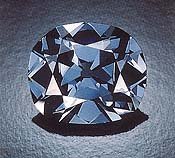 Whether or not you believe in the curse, the Hope diamond has intrigued people for centuries. Its perfect quality, its large size, and its rare color make it strikingly unique and beautiful. Add to this a varied history which includes being owned by King Louis XIV, stolen during the French Revolution, sold to earn money for gambling, worn to raise money for charity, and then finally donated to the Smithsonian Institution. The Hope diamond is truly unique.
Whether or not you believe in the curse, the Hope diamond has intrigued people for centuries. Its perfect quality, its large size, and its rare color make it strikingly unique and beautiful. Add to this a varied history which includes being owned by King Louis XIV, stolen during the French Revolution, sold to earn money for gambling, worn to raise money for charity, and then finally donated to the Smithsonian Institution. The Hope diamond is truly unique.
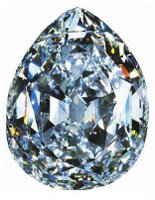 3. The Cullinan I, Star of Africa, is a pear shaped fine white diamond that weighs a whopping 530.20 carats .
3. The Cullinan I, Star of Africa, is a pear shaped fine white diamond that weighs a whopping 530.20 carats .4. The Sancy is a 55 carat diamond, and is also cut in a pear shape. It has been a cut stone for over five hundred years. Legend has it that it was worn by Charles the Brave in the 1470’s. It 
 was bought on the open market in 1570 by Signeur de Sancy, whose name has been associated with the diamond ever since. The stone has belonged to the Astor family of London since 1906.
was bought on the open market in 1570 by Signeur de Sancy, whose name has been associated with the diamond ever since. The stone has belonged to the Astor family of London since 1906.
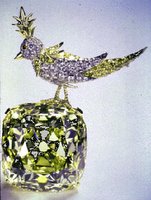 5. The Tiffany diamond comes from the famous Kimberley mine in South Africa. The Tiffany diamond weighs 128.51 carats, and was cut from a piece of rough stone that weighed 287.42 carats. It appears in "Bird on a Rock," a setting designed in the early 1960s by Jean Schlumberger.
5. The Tiffany diamond comes from the famous Kimberley mine in South Africa. The Tiffany diamond weighs 128.51 carats, and was cut from a piece of rough stone that weighed 287.42 carats. It appears in "Bird on a Rock," a setting designed in the early 1960s by Jean Schlumberger. family
family who had owned the stone for generations. Other accounts of the stone's history begin in 1526, while conflicting reports contend the stone was mined near the Krishna River and pres ented to an emperor in 1656. The diamond did originate in India though and was stolen from Delhi in 1739, taken to Iran. From Iran it was acquired by Afghans, who lost it to Indian rulers, who then came under British rule in 1849 and placed the diamond among the crown jewels. Koh-i-noor's first faceting resulted in a 191 carat irregular shaped gem with little fire, somewhat contrary to the translation of Koh-i-noor, which means mountain of light. It was recut to enhance brilliance and fire, reducing the size to a 109 carat, shallow, oval brilliant cut.
who had owned the stone for generations. Other accounts of the stone's history begin in 1526, while conflicting reports contend the stone was mined near the Krishna River and pres ented to an emperor in 1656. The diamond did originate in India though and was stolen from Delhi in 1739, taken to Iran. From Iran it was acquired by Afghans, who lost it to Indian rulers, who then came under British rule in 1849 and placed the diamond among the crown jewels. Koh-i-noor's first faceting resulted in a 191 carat irregular shaped gem with little fire, somewhat contrary to the translation of Koh-i-noor, which means mountain of light. It was recut to enhance brilliance and fire, reducing the size to a 109 carat, shallow, oval brilliant cut.
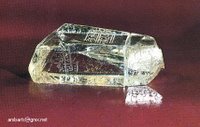 9. The Shah diamond came from India and weigh 88.70 carats. Ithas the names of three monarchs engraved on it, including the Shah of Persia (namesake). It is now in the Kremlin in Moscow, where it has been since 1829, when it was given as a gift to Tsar Nicholas. It is partly polished along its cleavage planes
9. The Shah diamond came from India and weigh 88.70 carats. Ithas the names of three monarchs engraved on it, including the Shah of Persia (namesake). It is now in the Kremlin in Moscow, where it has been since 1829, when it was given as a gift to Tsar Nicholas. It is partly polished along its cleavage planes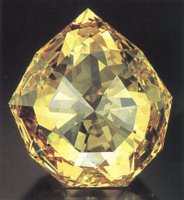 10."The 'Florentine,' also called the 'Great Florentine diamond,' actually forming part of a hatbutton, is known to be one of the largest diamonds in the world. It weighs 133 1/3 carats of Vienna, but is rather yellow. The stone is cut in nine surfaces covered with facets forming a star with nine rays. This jewel was once the property of Charles the Bold, Duke of Burgundy, who according to the custom of the day carried all his valuables in the battle-field, first to have them always in sight, and, secondly, on account of the mysterious power then attributed to precious stones. Charles lost this diamond at the battle of Morat on the 22nd June, 1476. Tradition relates that it was picked up by a peasant who took it for a piece of glass, and sold it for a florin. The new owner, Bartholomew May, a citizen of Berne, sold it to the Genoese, who sold it in turn to Ludovico Moro Sforza. By the intercession of the Fuggers it came into the Medici treasury at Florence. When Francis Stephen of Lorraine exchanged this Duchy against the Grand Duchy of Tuscany, he became the owner of the 'Florentine Diamond.' Through this prince, who became later on the consort of the Empress Maria Theresa, this diamond came into the private treasury of the Imperial House at Vienna. At the coronation of Francis Stephen as Emperor of Germany at Frankfort-on-the-Main, the 4th day of October, 1745, the 'Florentine diamond' adorned the crown of the House of Austria."
10."The 'Florentine,' also called the 'Great Florentine diamond,' actually forming part of a hatbutton, is known to be one of the largest diamonds in the world. It weighs 133 1/3 carats of Vienna, but is rather yellow. The stone is cut in nine surfaces covered with facets forming a star with nine rays. This jewel was once the property of Charles the Bold, Duke of Burgundy, who according to the custom of the day carried all his valuables in the battle-field, first to have them always in sight, and, secondly, on account of the mysterious power then attributed to precious stones. Charles lost this diamond at the battle of Morat on the 22nd June, 1476. Tradition relates that it was picked up by a peasant who took it for a piece of glass, and sold it for a florin. The new owner, Bartholomew May, a citizen of Berne, sold it to the Genoese, who sold it in turn to Ludovico Moro Sforza. By the intercession of the Fuggers it came into the Medici treasury at Florence. When Francis Stephen of Lorraine exchanged this Duchy against the Grand Duchy of Tuscany, he became the owner of the 'Florentine Diamond.' Through this prince, who became later on the consort of the Empress Maria Theresa, this diamond came into the private treasury of the Imperial House at Vienna. At the coronation of Francis Stephen as Emperor of Germany at Frankfort-on-the-Main, the 4th day of October, 1745, the 'Florentine diamond' adorned the crown of the House of Austria."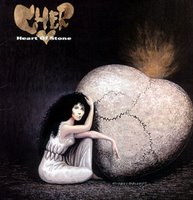
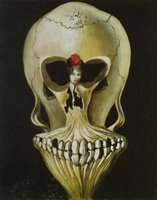

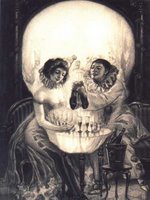

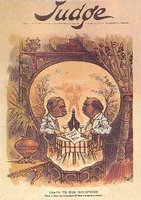
 Bank of America created the BankAmericard in 1958, a product which eventually evolved into the Visa system ("Chargex" also became Visa). MasterCard came to being in 1966 when a group of credit-issuing banks established MasterCharge. The fractured nature of the US banking system meant that credit cards became an effective way for those who were travelling around the country to, in effect, move their credit to places where they could not directly use their banking facilities
Bank of America created the BankAmericard in 1958, a product which eventually evolved into the Visa system ("Chargex" also became Visa). MasterCard came to being in 1966 when a group of credit-issuing banks established MasterCharge. The fractured nature of the US banking system meant that credit cards became an effective way for those who were travelling around the country to, in effect, move their credit to places where they could not directly use their banking facilities